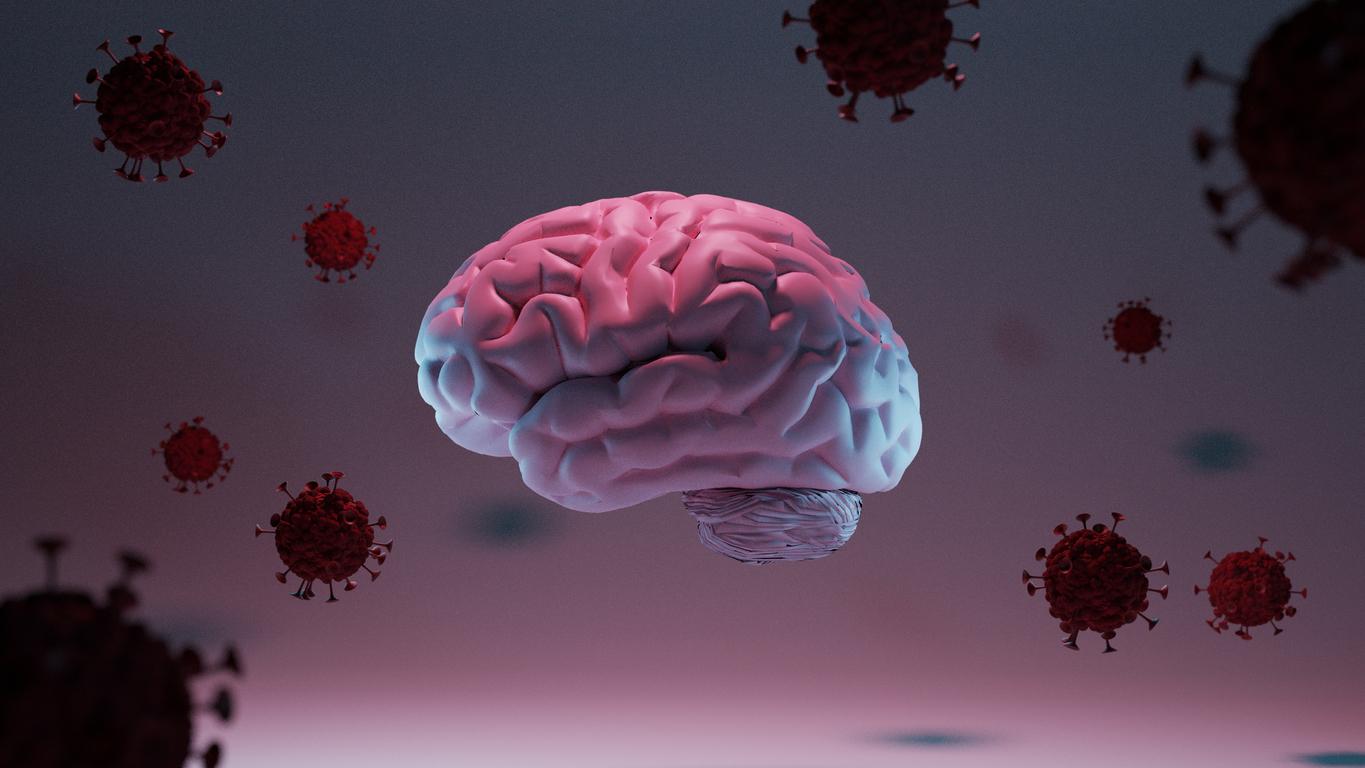Researchers from the Pasteur Institute and Paris Cité University have discovered that several variants of SARS-CoV-2 are capable of moving inside neurons and infecting the brain.

- A team from the Pasteur Institute and Paris Cité University has demonstrated that certain variants have the capacity to infect the central nervous system.
- They are also able to move around the brain using axons.
- The researchers plan to continue their work to determine whether the virus persists in the brain after the acute phase of infection and may be responsible for the symptoms of long covid.
Covid-19 presents a fairly significant clinical picture. The neurological symptoms have particularly evolved over the months and the appearance of variants. “If at the start of the Covid-19 pandemic, anosmia was identified as one of the characteristic symptoms of an infection, this same symptom was found to be less frequent with variant infections. Omicron/BA.1”, note researchers from the Pasteur Institute and Paris Cité University. They wanted to determine whether the variability of symptoms was linked to an “affinity” of SARS-CoV-2 for the nervous system. The work they carried out and presented in the journal Nature Communications confirm that several variants have the capacity to infect the central nervous system.
Covid-19: several variants infect the brain
In their experiments, the scientists studied how several strains of SARS-CoV-2 (there original strain of the virus detected in Wuhan and variants GammaDelta and Omicron/BA.1) reached the central nervous system and infected the olfactory bulbs (structure located in the cranium managing olfactory information). “In this study, we show that infection of the olfactory bulbs is systematic and is not linked to a particular variant, nor to a particular clinical manifestation, such as loss of smell for example.”, precise Guilherme Dias of Melofirst author of the study and researcher in the unit Lyssavirusepidemiology and neuropathology at the Institut Pasteur in a communicated.
The team also identified in the ancestral virus (Wuhan)a genetic sequence linked to anosmia. When the latter was not present in the variants, the incidence of loss of olfaction in infected animals was reduced, but not the spread of the virus via the olfactory bulbs. “This tends to prove that anosmia and neuronal infection are two uncorrelated phenomena”noted Guilherme Dias of Melo. “It is entirely possible, if we follow this reasoning, that even an asymptomatic infection – and therefore clinically benign – is characterized by diffusion of the virus in the nervous system.“
Covid-19: how variants can move in the brain?
But how does SARS-CoV-2 manage to reach the olfactory bulbs? Thanks to a study of human neurons in vitrothe researchers found that the virus is able to move in both directions of axon (extension of the cell, which conducts the electrical signal to the next cell) once it is inside the neuron. Thus, it is likely to go from the cell body to the axon terminals and vice versa. “The virus appears to effectively exploit the neuron’s physiological mechanisms to move in both directions. The SARS-CoV-2 variants we studied – the Wuhan ancestral variant, Gamma, Delta and Omicron/BA.1 – infect neurons in vitro And are capable to move along the axons.”, explains the team.
Hervé Bourhy, last author of the study and head of the Lyssavirus, epidemiology and neuropathology unit at the Institut Pasteur, adds “the next step will be to understand, in the animal model, if the virus is capable of persisting in the brain beyond the acute phase of infection and if the presence of the virus can induce persistent inflammation and cause persistent symptoms described in cases of long Covid, such as anxiety, depression and brain fog“.
















